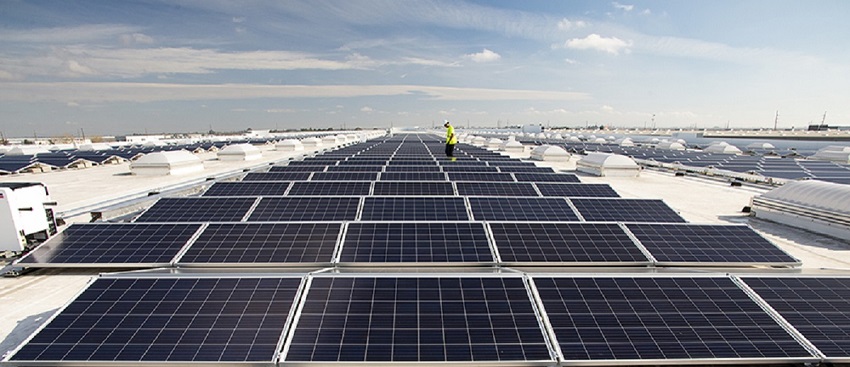8 Easy Facts About Solar Panel Installation Pennsylvania Shown
8 Easy Facts About Solar Panel Installation Pennsylvania Shown
Blog Article
Home Solar Savings PA: Our Company Concentrates On The Setup And Management Of Photovoltaic Energy Systems
History and Development of Solar Panel Companies
The beginning of solar panel companies can be traced back to the 1800s when Alexandre Edmond Becquerel discovered the photovoltaic impact. Would he have envisioned how his discovery would reinvent the way we harness energy?
Early Starts

In 1954, Bell Labs developed the very first useful solar battery. This marked a considerable milestone in the history of solar power. They were initially used to power area satellites, but who understood this was simply the beginning?
Development and Growth
- In the 1970s, an energy crisis resulted in increased interest in renewable resource sources, consisting of solar power.
- By the 1990s, improvements in technology and increasing ecological awareness resulted in the growth of photovoltaic panel business internationally.
A New Period
As we entered the 21st century, the solar market witnessed an exponential growth. The demand for tidy and sustainable energy caused a brand-new period in the photovoltaic panel industry.
Remarkable Facts
- The world's very first solar power station was constructed in 1982 in Hisperia, California.
- By 2019, solar energy had become the world's fastest-growing source of power.
The journey of solar panel business has been exceptional, hasn't it? The future holds tremendous capacity, with constant improvements leading the way for a sustainable future. Can we envision a world powered entirely by solar energy?
Moving on
Today, solar panel companies continue to innovate, aiming for more effective and economical options. The advancement of solar energy has come a long way, and yet, the journey has just started.
The Core of Photovoltaic Panel Production
Ever wonder what goes into developing those shiny, sun-loving solar panels? The process is as impressive as completion product (Affordable Solar Panels PA). High-purity silicon, the primary component in photovoltaic panels, undergoes numerous transformations to ensure its effectiveness and durability
From Sand to Silicon
Crystalline silicon, the backbone of most solar panels, originates from simple sand. It's an interesting journey, isn't it? The sand undergoes a high-temperature response with carbon to form silicon. This isn't just any silicon. The silicon used in photovoltaic panels is "solar-grade," with a pureness of 99.9999%. It's this pureness that makes it possible for the panels to effectively transform sunlight into power.
Ingot Formation
When the silicon is pure enough, it's time to form ingots. Image a large, cylindrical block of solid silicon. How is this attained? Through a procedure called Czochralski process, where the silicon is melted and then slowly recrystallized. It's a slow dance of science, leading to a solid item that is almost as pure as the raw silicon itself.
Slicing into Wafers
The ingots are then sliced into wafer-thin pieces, like slicing a loaf of bread. Each piece is a possible solar cell, waiting to harness the power of the sun. Did you know that the silicon wafers are just about 200 micrometers thick? That has to do with half the thickness of a human hair! The procedure requires precision and patience, however the result is a set of wafers ready to be developed into solar batteries.
Creating Solar Cells
With the wafer prepared, it's time for the magic to happen. The silicon wafer is 'doped' with other components like phosphorous and boron to create an internal electrical field. It's this field that enables the conversion of sunlight into electrical power. Complex, isn't it?
Assembly and Quality Control
Solar cells resemble puzzle pieces that come together to form a solar panel. The cells are soldered together in a grid-like pattern, then covered with a protective layer of glass. The last step includes rigorous quality control checks. After all, it's vital that every solar panel carries out at its peak, wouldn't you agree?
Insider Suggestion
Always keep in mind that even the most optimally manufactured solar panel can lose performance due to dirt and particles build-up. Regular cleansing can substantially improve your panels' efficiency.
Comprehending the Environmental Impact of Solar Panel Companies
Ever contemplated the environmental footprint of a solar panel company? Green technology, such as solar, has changed our energy landscape, however what about the behind-the-scenes effect?
The Production Process: A Double-Edged Sword
The manufacturing procedure for solar panels demands a significant amount of energy. This process, referred to as 'em bodied energy', can be viewed as a form of 'energy financial obligation'. It's a little like borrowing today's sunshine to power tomorrow's energy needs. Worry not, the energy payback time is typically much shorter than you 'd think!
- The energy repayment period for photovoltaic panels is generally 1-4 years.
- After this duration, the energy produced is essentially carbon-free.

Life After Decommission
And what occurs when a solar panel reaches completion of its life-span? Can it simply be tossed into the trash? No, that wouldn't be extremely green, now, would it?
A feasible option is recycling. While photovoltaic panel recycling is still in its infancy, it holds a world of potential. Recycling not only keeps materials out of landfills but also lowers the requirement for new basic materials.
Accountable Sourcing: More Than A Buzzword
Where does the silicon originated from, you ask? The industry's demand for silicon and uncommon minerals can lead to damaging mining practices. Accountable sourcing is for that reason vital to decrease harmful environmental effects.
Decreased Carbon Emissions: The Larger Photo
Let's not forget the larger image: solar energy substantially reduces carbon emissions. As soon as installed, photovoltaic panels create clean, renewable energy, offsetting their preliminary production footprint.
In short, the environmental impact of photovoltaic panel companies is a complicated concern. With accountable practices, the pledge of website a cleaner, greener future is well within our grasp.
Financial Performance and Market Share of Solar Panel Companies
Ever wondered why some solar panel companies - Solar Panels Pennsylvania outshine others in the market? What sets them apart? The key depend on their financial efficiency and market share
Financial Efficiency: An Important Indicator
Financial performance plays a critical function in the success of any service. For solar panel companies, it's no various. Strong financial efficiency allows these companies to buy innovative technology, research, and development, consequently creating top quality, efficient photovoltaic panels.
How do they achieve this? With a focus on expense effectiveness and strategic financial investments. Companies that handle to lower production expenses without jeopardizing on quality tend to fare better in the market.
Market Share: A Procedure of Success
Market share, on the other hand, is a direct reflection of a business's appeal among customers. A high market share suggests more homeowners are selecting their photovoltaic panels over rivals.
What's the secret recipe for gaining a bigger market share? It boils down to client complete satisfaction and brand name credibility. Business that focus on consumer needs and maintain a positive brand image are most likely to capture a larger share of the market.
- Consumer Fulfillment: Photovoltaic panel business that provide dependable products and remarkable customer service tend to have higher client satisfaction rates.
- Brand Track record: A strong brand credibility is built in time through consistent delivery of quality services and products.
Financial Efficiency and Market Share: The Cooperative Relationship
Remarkably, the relationship between financial performance and market share is not one-sided. They feed off each other. A strong monetary efficiency can increase a company's market share, while a high market share can enhance monetary efficiency.
As a solar panel business, stabilizing these two aspects is essential for long-term success. A business that disregards either of them might find it challenging to preserve its position in the competitive solar market.
The Takeaway
So, what does all this mean for you? Whether you're a homeowner wanting to set up photovoltaic panels or an investor considering the solar industry, understanding the monetary efficiency and market share of photovoltaic panel business is essential. They are crucial indicators of a company's health and capacity for future development.
Report this page